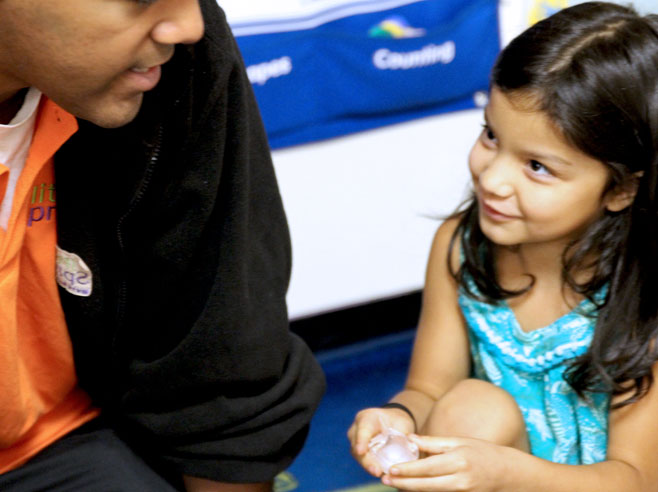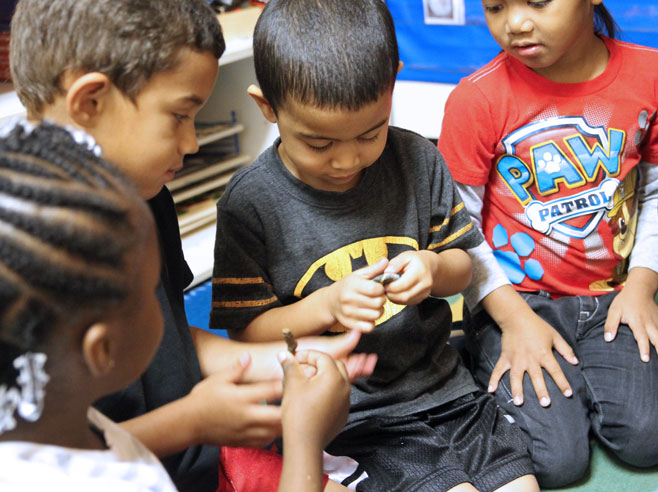Children observe and compare how objects with different textures slide down a surface.
Materials

- Cardboard sheet, rimless cookie sheet, or other similar ramp surface
- Chart paper
- Marker
- Objects to send down ramp: ice cubes, stick, small stone, eraser
- Plastic container to hold ice cubes
Preparation
- Gather ramp surfaces and objects materials.
- Try out the activity to determine how gentle/steep to make the ramp incline. It should be steep enough so that all, or almost all, the objects slide—at least a little bit.
Directions: Lesson 9
Circle Time: Introduction
- Lay the ramp surface flat on the floor. Show children the surface you are using as a ramp and the small objects that you will send down the ramp. Have children touch an ice cube, a stick, a small stone, and an eraser and describe the textures. Line up the objects on one end of the cardboard or cookie sheet. Tell children that you will slowly lift that end of the sheet to make a ramp. Have children predict how the objects will move. Possible discussion ideas:
- Which object do you predict will move first?
- Which object do you predict will travel the farthest? Why do you think that?
- Which object do you predict will travel the least far? Why do you think that?
- Write down children’s predictions and supporting reasons on the chart paper.
- Slowly tilt the sheet to make a gentle ramp and encourage children to note where each object lands.
- Compare the results with children’s predictions.
- Repeat the activity a number of times. Have children line up the objects, then tilt the sheet (try to tilt it to roughly the same angle so that results are similar). Encourage children to discuss their experiments. Possible discussion ideas:
- Does the same object always move first?
- Does the same object always move the farthest?
- Why do you think the ice cube is the one that moves the farthest?
- Discuss how objects that traveled farther were smoother and thus created less friction when they slid down the ramp.


